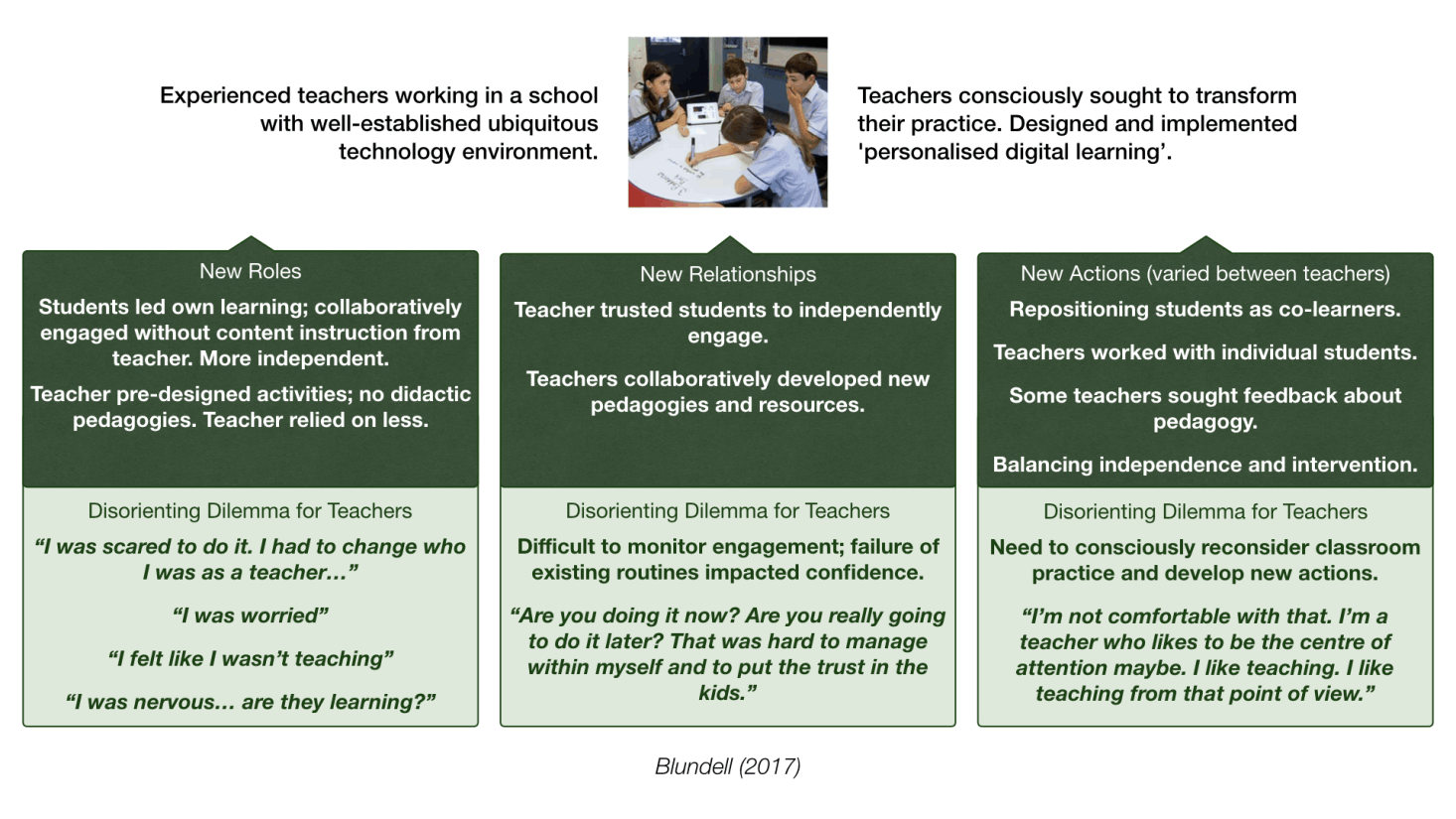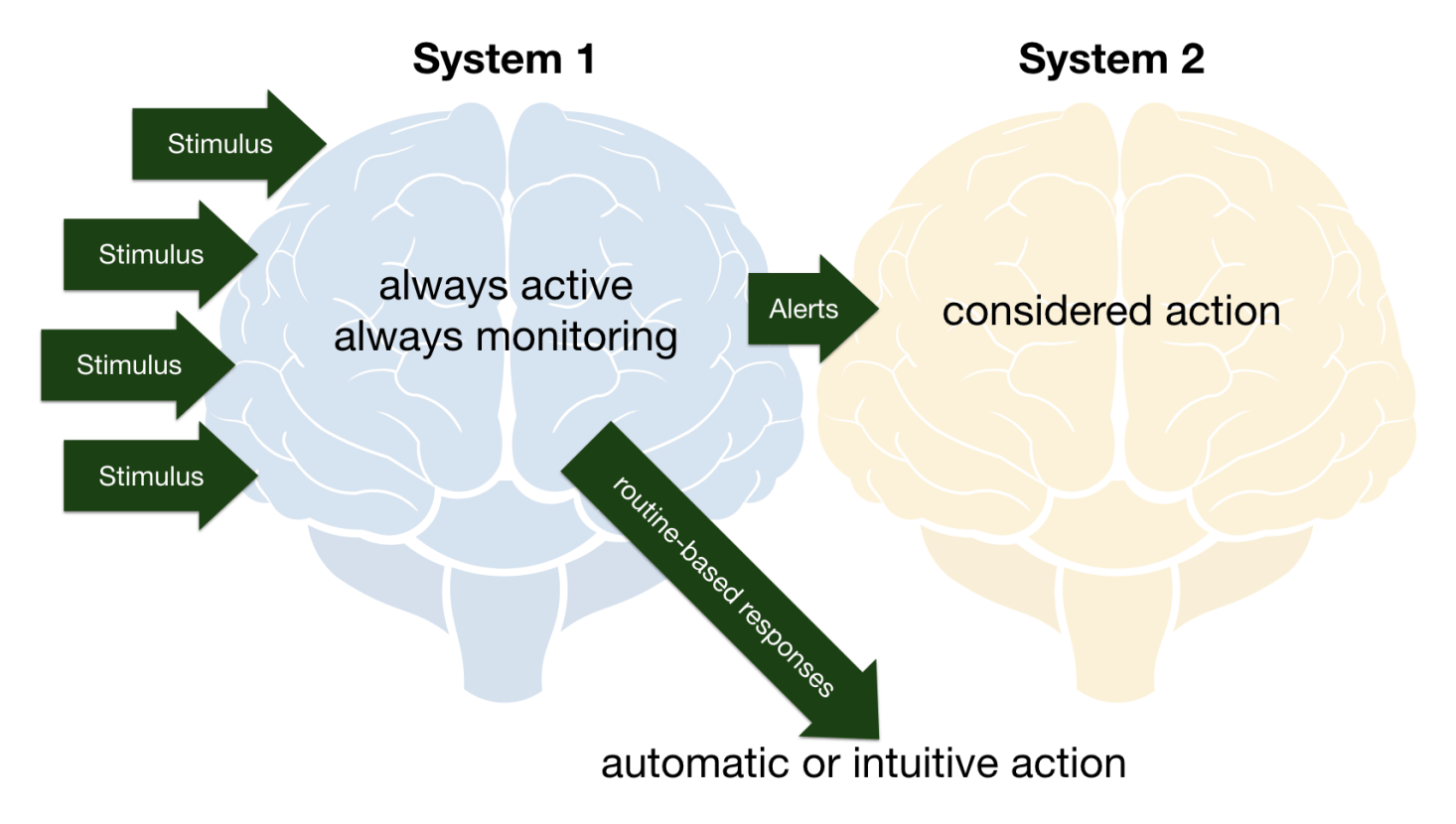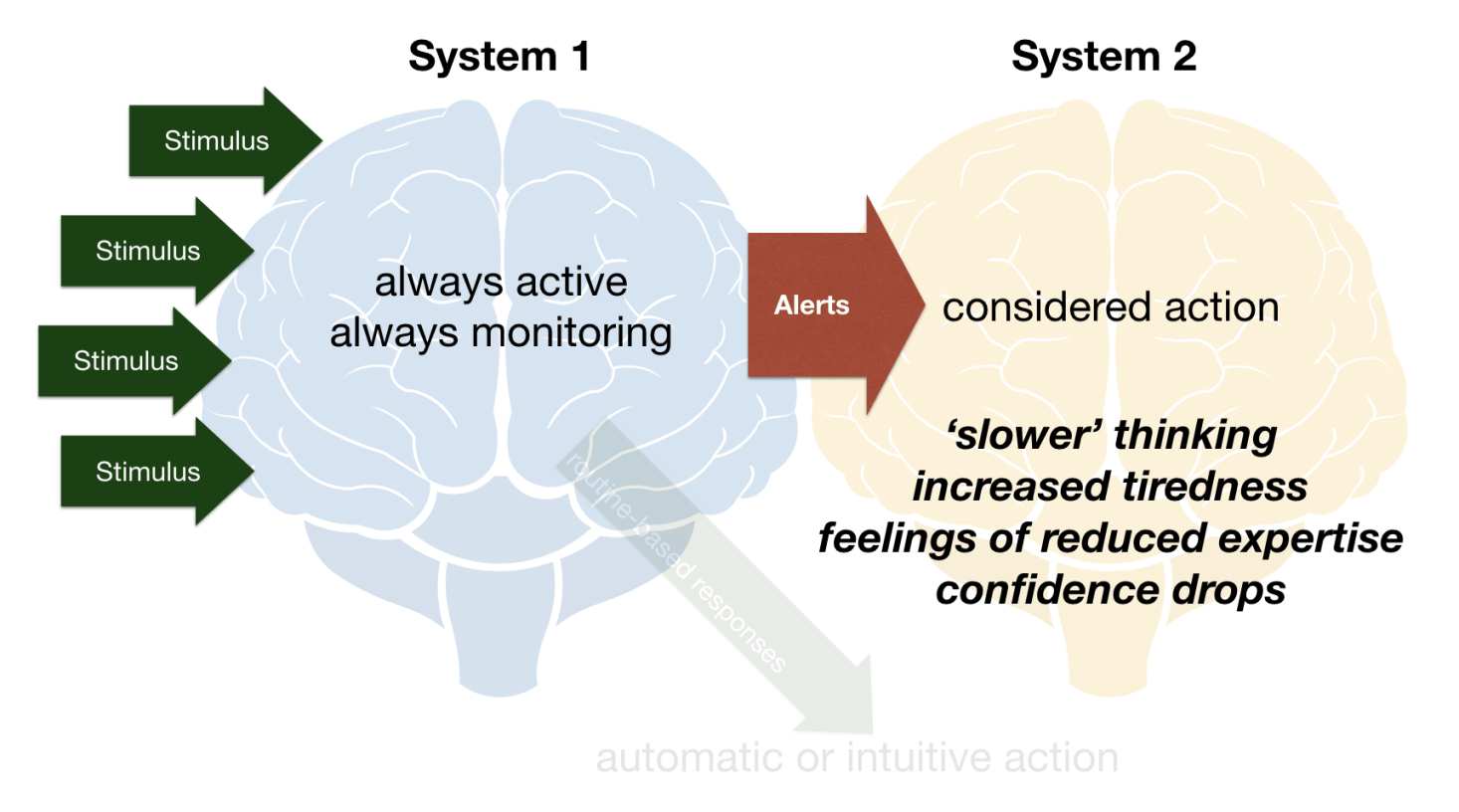
Aspiring to find better ways to activate learning leads teachers to refine existing practices and explore promising new practices. This includes making better use of digital technologies. Researchers and educational provocateurs like Michael Fullan (2013) argue that, when used creatively and purposefully by educators, digital technologies can help to activate deeper forms of learning. However, changes to classroom roles, relationships and actions can be challenging, as illustrated by the following findings from my PhD research (Blundell, 2017).



By way of illustration, consider the previously mentioned findings about challenges initially experienced by the teachers when ‘personalised digital learning’ changed classroom roles, relationships and actions. Some of the teachers recounted thinking students were off task but on intervention discovered that the students were engaged. When considered using Dual Systems theory, we now appreciate that stimuli received by System 1 were consistent with previous experience and suggested off task behaviour. Further investigation provided additional stimuli were inconsistent and System 2 was called into action to analyse the situation.
The other more substantial challenge related to the teachers questioning their place in learning during the initial phases of implementation The teachers reported that established routines for leading learning and monitoring engagement became inoperable. This resulted in feelings of uncertainty and doubt. The changed roles, relationships and actions created new classroom dynamics that were inconsistent with previous practice and routines. When considered using Dual Systems theory, in the absence of reliable routines System 2 was activated to analyse, critically evaluate and deliberate. Although this allowed for conscious consideration, System 2 thinking is slower and is associated with self-doubt, which is clearly evident in the teachers’ statements. At the end of the case study the teachers’ confidence with the new roles, relationships and actions improved. The opportunity to discuss and reflect on these experiences with colleagues helped.
When used as part of a design-based approach to professional learning, an understanding of routine can help teachers to consider the implications of exploring promising practices. Dual Systems theory is useful for conceptualising the feelings associated with changing established practices, and creates a common language that teams can use to communicate and empathise with each other. It also helps teams to acknowledge and appreciate that establishing new practices takes time and is dependent on reflection.
For more information, refer to my paper:
Blundell, C., Lee, K.-T., & Nykvist, S. (2019). Using Dual Systems theory to conceptualise challenges to routine when transforming pedagogy with digital technologies. Teachers and Teaching: Theory and Practice (in press). doi:10.1080/13540602.2019.1652161
Published: 2 October, 2019
Copyright 2019 by Christopher Blundell